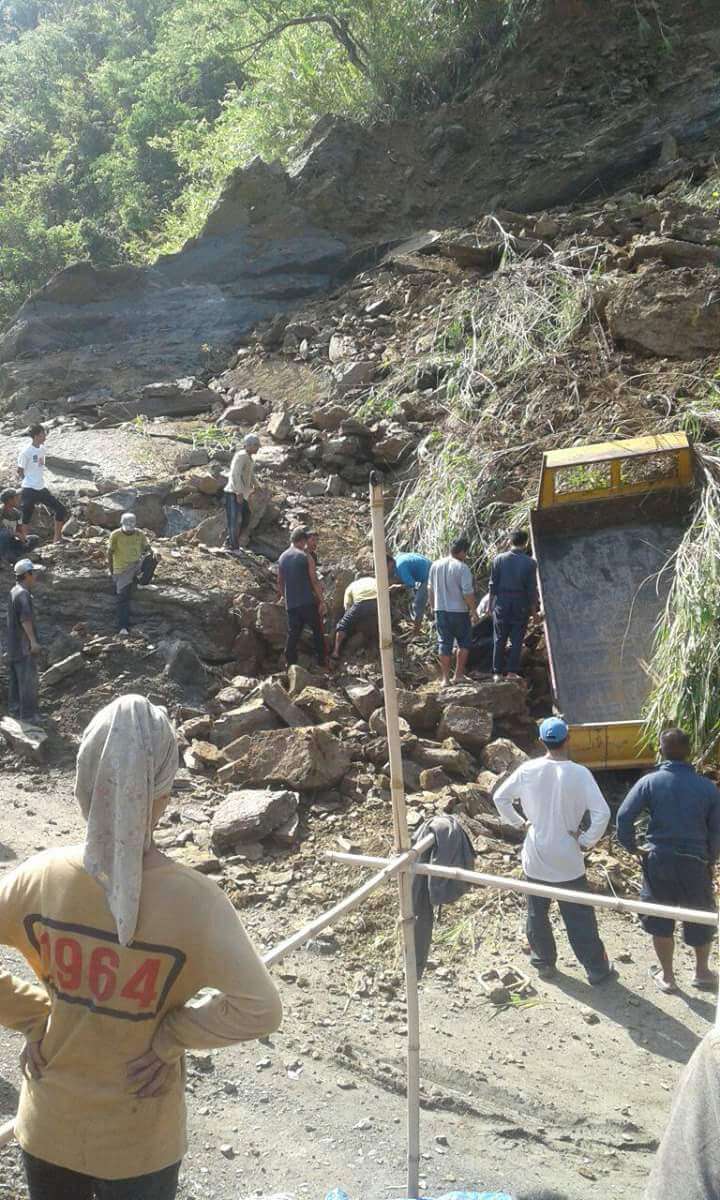Perennial Floods in Assam
As the flood situation in Assam has visibly improved, can we think about its mitigation and if that’s not possible in the near future should we indulge in pragmatic discussions on various adaptation strategies. The recent second wave of perennial floods in Assam snatched away the lives of over hundred people, damaged more than 25,000 hectares of crop area, devastated 10,50,000 domestic animals and poultry and temporarily displaced thousands of families.
With more to it, the natural disaster smashed a number of embankments, roads & bridges, buildings and other infrastructure in the State. The swollen Brahmaputra river water inundated Kaziranga National Park and Tiger Reserve for days and over 200 wild animals including 10 precious single horn rhinoceros also drowned.
Millions Affected
At its peak, in the first half of July 2024, the deluge hit over 2.7 million people (out of 33 million population) in 30 districts of Assam, where more than 3500 villages were submerged by the flood water for many weeks. Thousands of families in the districts of Dhubri, Cachar, Golaghat, Darrang, Goalpara, Lakhimpur, Barpeta, Bongaigaon, Biswanath, Charaideo, Chirang, Dhemaji, Dibrugarh, Jorhat, Kamrup & Kamrup (metropolitan), Karbi Anglong, Karimganj, Hailakandi, Kokrajhar, Majuli, Morigaon, Nagaon, Hojai, Nalbari, Sivasagar, Sonitpur, Tamulpur, Tinsukia, Udalguri, etc had to take shelter in over 700 relief camps of the district administration. The muddy flood water from Brahmaputra, Barak, Kushiyara, Subansiri, Burhi Dihing, Dikhou, Disang, Dhansiri, Jia-Bharali, Puthimari, Kapili, Beki, Dhaleswari, Pagladiya, Burhadiya etc rivers inundated a large area of cropland across the State.

Avalanche after rain in Assam. video screenshot.
Prime Minister Narendra Modi, who recently won a consecutive third term in New Delhi, assured full cooperation to the State government to deal with the situation. Union home minister Amit Shah also called Assam chief minister Himanta Biswa Sarma to reassure all possible support from the Centre. Union ministers Sarbananda Sonowal and Pabitra Margherita, both hailing from Assam, assessed the flood situation in different parts and assured that the governments in New Delhi and Dispur are looking for a permanent solution to the recurring flood menace.
Assam Governor Gulab Chand Kataria also visited some flood-ridden areas and took stock of the situation. CM Sarma personally visited a number of flood devastated areas to review the ground situation and interacted with the displaced families. He also directed the State ministers, legislators and concerned officials to monitor the situation closely and take necessary actions as and when needed.
Continued rescue operations were carried out by the National Disaster Response Force, State Disaster Response Force along with military personnel in various parts of the State. Various civil society groups and socio-cultural organisations like Rashtriya Swayamsevak Sangh extended support to the flood affected residents and provided phenyl, bleaching powder, livestock feed, etc to address the post-flood diseases.
A large part of Guwahati, naturally a bowl-shaped lowland, also witnessed flash floods for several days. Amidst the chaos, a minor boy was swept away in Bamunimaidan area of the city by the current of flood water and his body was recovered three days later from a drain in Rajgarh locality. The victim, identified as Avinash Sarkar (8), was returning home at Noonmati locality with his father during the evening hours amidst rains when he fell on a roadside drain to death.
Many Animals Affected
Kaziranga forest reserve went under flood water for many days and reportedly 212 wild animals including over 180 deers died due to drowning and other causes. The park authority however rescued 143 animals including two rhino calves and 123 animals were released after necessary treatments. The field director Sonali Ghosh informed media persons that most of the forest camps (out of 233) inside the park went under flood water for days. The safe habitat for the largest population of rhinos in the world eventually experiences flooding every year and as the core 430 square kilometer area (now extended to 1,300 sq km) goes under the water, the animals take refuge in the highlands erected inside it. Many animals also try to cross the National Highway-715 on its southern border to climb the hilly areas of Karbi Anglong.
While crossing the highway, some animals are killed by the speeding vehicles and hence the authorities instruct the drivers to maintain a safe speed limit to avoid any unwanted incidents. Often the vehicles are escorted by the forest officials while crossing the park to prevent accidents with the fleeing animals. The UNESCO world heritage site, which gives shelter to more than 2600 one-horned rhinos along with Asiatic elephants, water buffalo, royal Bengal tigers and a varieties of birds faced a major flood in 2017, when over 350 animals including 24 rhinos died due to drowning and colliding with moving vehicles on the highway.
Otherwise, the number of poaching incidents in Kaziranga has been reduced in the last few years, thanks to the brutal laws against the poachers, strengthening of ground staff inside the protected forest areas and increasing public awareness in the fringe localities. Statistics reveal that the highly protected Kaziranga lost two adult rhinos in January to poachers, who took away the horns understandably to earn an attractive amount of money from the illegal wildlife markets. Last year, Kaziranga witnessed one rhino poaching incident (Manas National Park also lost one rhino to poachers) and it was preceded by two incidents in 2021 and 2020, whereas three rhinos were killed in 2019.
So it took five years to kill 11 rhinos in Assam by the poachers, thanks to the brutal laws against the poachers, strengthening of ground staff inside the protected forest areas and increasing public awareness in the fringe localities of forest reserves. Needless to mention, Assam recorded a zero rhino-poaching year in 2022 to draw the attention of world conservationists. But a single wave of flood in Kaziranga killed 10 rhinos this year.
The flood, erosion and storms have also killed more than 110 people in Assam and put thousands of families in relief camps for days. Thousands of families also face permanent displacement from their ancestors’ villages. In the post-flood period, various vector-borne diseases strike the villagers and mount their troubles.

Perennial floods in Assam
Many States Affected
Besides Assam, its neighbouring States like Manipur, Meghalaya, Tripura, Arunachal Pradesh, Nagaland and Mizoram also experienced torrential rains and subsequent flooding. Heavy rains inflated the rivers of Manipur namely Imphal, Thoubal, Nambul, Iril, etc to submerge a large area of arable land and residential localities.
The overpowered Brahmaputra and other rivers inundated a large area of neighboring Bangladesh, where 40,000 people were forced to take shelter in government run relief camps. The recent wave of flood in northern Bangladesh affected 17 districts (out of 64 units). Major rivers like Jamuna, Ganges-Padma, Surma-Meghna, Teesta, etc were flowing within the danger mark. No less than two million people faced the flood furies and at least ten people lost their lives due to the disaster.
By July 1st this year, 34 people died in the flooding.
Mitigation Needed
So it’s high time to mitigate the perennial flood in Assam. Often the government schemes (mostly embankment-centric) are announced and implemented but it works partially only. Once we talked about controlling the flood (so the flood-control department existed) and now admit we have to adopt the ways to live with floods.
The flood-prone Brahmaputra valley witnessed a major devastation in 2004, when the deluge affected 12.4 million people and claimed 251 people’s lives. Heavy devastation was also witnessed in 1998 and 1988 floods in Assam. When the flood mitigation emerges too difficult, discussion should focus on minimizing the devastating impact with proper policies.
Recently, the Union government proposed to create at least 50 large ponds in the State, where the extra volume of Brahmaputra water will be stored temporarily to reduce the intensity of destruction. Many natural lakes on the river banks are also expected to be cleaned up to carry out additional activities like agriculture, irrigation, pisciculture and tourism.
New Delhi should continue pursuing upper riparian countries like Bhutan and Tibet (now under China) for receiving timely alerts about unusual high rainfalls and hydropower activities (including damning water resources) in their places. It’s also time for the government to redefine the flood adaptation measures so that some positive outcomes may reach the common people.
What is not known is if weather modification played a hand in these disasters.




